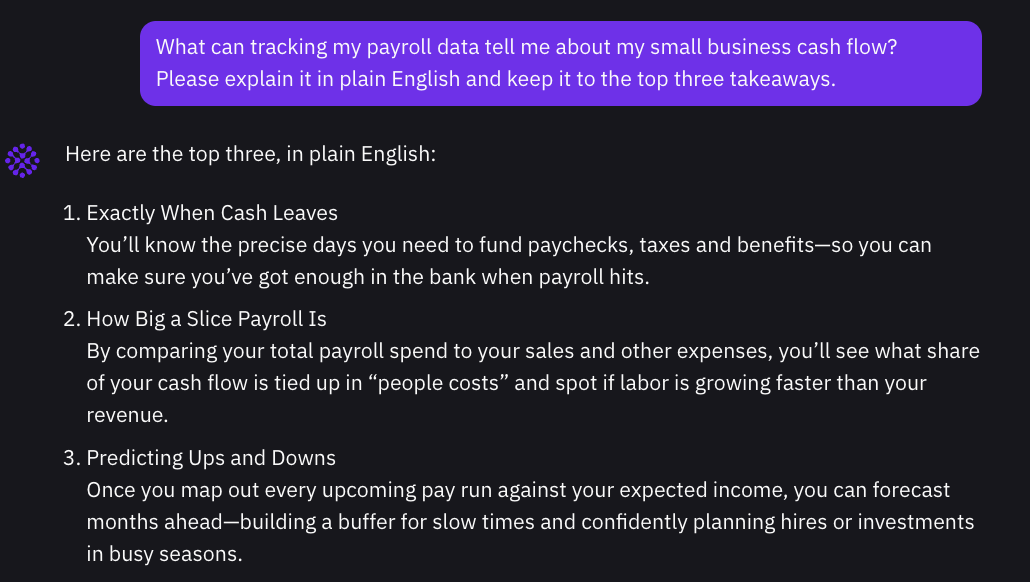

Employee vs. contractor. To-may-to, to-mah-to, right? Well, not so much. They both work for you, and you pay them for this work. But there are important differences that affect how you pay them, the rights they enjoy, and the benefits they receive.
As an employer, you’re responsible for following labour and tax laws. What can go wrong is when you knowingly have someone work with you as a contractor, but you’re really treating them more like an employee. This puts you in violation of the laws, potentially damaging your reputation as well as your bottom line.
Most small businesses don’t intentionally make this mistake. And the fact that you’re reading this means you want to get it right. We’ll give you a high-level overview of what you should know to treat your business and the people you employ with the greatest respect and care.

An employee is someone who works mainly or entirely for you. They’re part of your team and integrated into your business. As part of that relationship, you manage payroll and income taxes, pay for vacation and personal time off, and offer other benefits. When you pay an employee, you’re also handling these extra pieces.
A contractor is someone you hire or pay for specific services. They operate as their own business, and you only pay them for the work they do. You don’t handle their taxes or offer vacation pay, overtime, or benefits. You simply pay the agreed-upon amount for their services.
While the difference between an employee and a contractor may seem black-and-white, it isn’t always. Misclassification, when you have someone work with you as a contractor, but you’re really treating them more like an employee, can be a serious legal and financial concern.
According to the Canada Labour Code (CLC), as of June 20, 2024, there’s a presumption that anyone paid for work is an employee unless the employer can prove otherwise. They emphasize that the total relationship between the employer and the individual must be reviewed to determine if misclassification has occurred.
When examining common individual factors, such as control, ownership of tools and equipment, financial risk, and integration, in the modern work world, it’s easy for the lines to get blurred.
Because of this, the guidance is to look at the relationship as a whole, rather than any individual component on its own.
If you want a definitive call on whether someone’s an employee or contractor, you can request a ruling from the Canada Revenue Agency (CRA). This kind of request is called an EI/CPP ruling, which will let you know if you have an employee/employer relationship that requires you to manage payroll taxes for this individual.
Whether you hire an employee or engage a contractor, document the terms of your engagement and ensure both parties have a full understanding of the agreement. This is so picky, but also important to know.
One preposition — of vs. for — makes all the difference in signalling the business relationship.
The entire contractor vs. employee debate really comes down to intent. If you meant well, but made an innocent mistake, chances are you won’t be punished as severely as someone who knowingly denied benefits. Once you spot a problem, act quickly and consistently to fix it. Good faith goes a long way.
Even if your team is small, the administrative burden is mountainous. The average small business with five employees or less spends 25 times more hours on payroll than larger businesses. Not to mention, getting gouged by payroll providers with expensive fees that can add up to $1,500 a year.
That’s why we’ve built Huumans Payroll, and we’ve made it forever affordable so that you can manage paying employees and contractors with ease. You can even get started for free with our Payroll Relief program that lets you run payroll for up to 5 employees free for the first year.
Using payroll software lets you:
While it seems counterintuitive and that you should just write a cheque or send an e-transfer, using payroll software to pay contractors has its advantages, including:
Basically, whenever it comes to income, whether it’s an employee or a contractor, it’s not just money, it’s a tax record. As an employer, you’re responsible for following all the rules for income and payroll taxes. Staying on top of these things also shows your leadership and builds trust.
Your payroll costs are a regular cash outflow for your business. Tracking this along with the rest of your financial data gives you a better understanding of how the cash flows through your business. That’s why with Huumans Payroll, you’re also connected to the Huumans Financial Dashboard and an AI-powered advisor named Roy. And, if you’re not sure what you need to know, just ask.

For more help navigating the employee vs. contractor conundrum, check out these links.
Yes, our payroll software lets you pay both employees or contractors.
When you pay an employee, you also handle income tax, payroll deductions, and benefits. With a contractor, you simply pay for services. At year-end, issue T4s for employees and T4As for contractors paid $500 or more.
We get you. While we can’t simplify the tax laws, we can give you the tools to make it a whole lot easier. Get started and get payroll relief today.
Fine print changes all the time. We do our best to keep things accurate and helpful, but this blog doesn’t replace your accountant, bookkeeper, or lawyer.
If you catch something off, let us know and we’ll fix it. And if we link to other sites, that’s just us sharing resources — what they say is on them, not us.